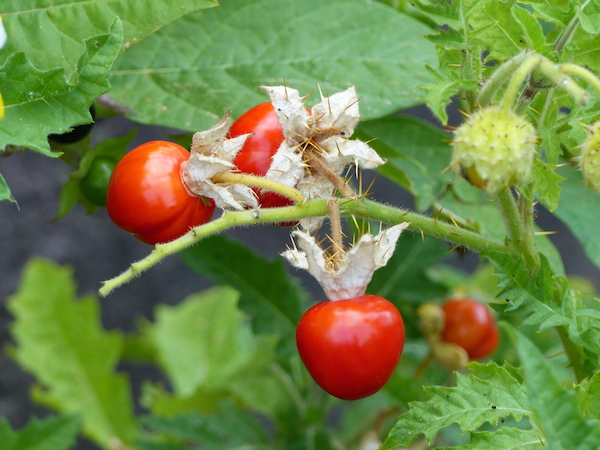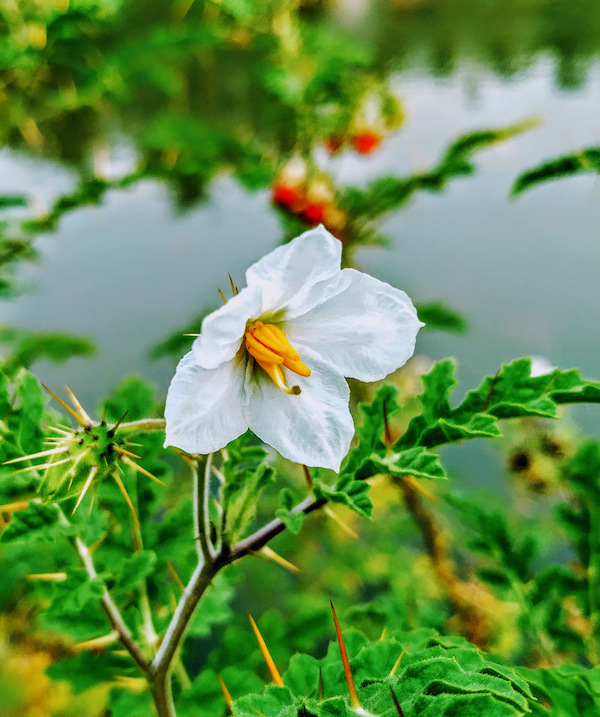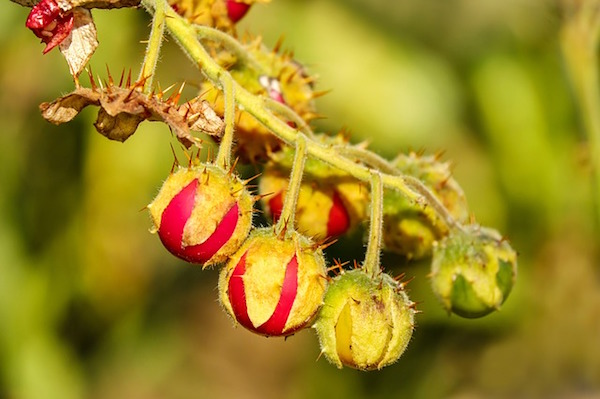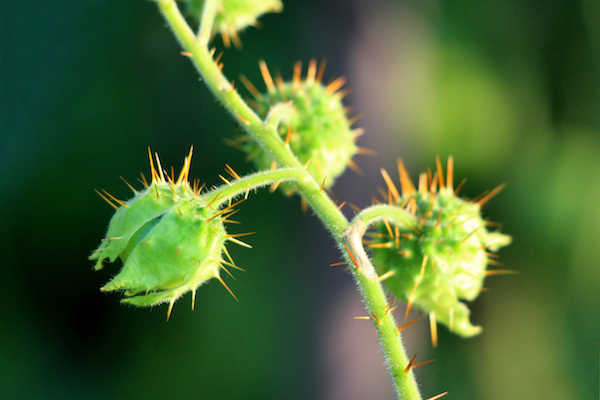Affiliate disclosure: This post may contain affiliate links. Please see our Privacy Policy.
Litchi Tomato, or Morelle de Balbis, has been grown in small gardens for at least 200 years, and with it’s becoming increasingly popular with renewed interest in heirloom gardening. Its Latin name is Solanum sisymbriifolium, which puts it in the nightshade family along with tomatoes and eggplant.

What are Litchi Tomatoes?
A small fruit in the tomato genus, they’re known as litchi tomatoes in the US, Morelle de Balbis in France and Vila Vila in Latin America. Their flavor supposedly resembles tart cherries, with a tiny hint of tomato.
Baker Creek Heirloom Seeds describes litchi tomato as:
“The most intriguing garden berry we have ever seen, and with superb creamy and mild cherry flavor. A totally unique fruit, it is delightful to imagine litchi tomato into myriad culinary interpretations from mock cherry pies to chutneys and pickles.”
The origins of the litchi tomato are a bit unclear. Some sources say they come from the South Pacific, while others claim they come from South America.
In either case, they’ve grown in both locations now, as well as more northern climates. It’s claimed that the Canadian prime minister Justin Trudeau grows these in his home garden, so clearly they can handle shorter seasons.
Beyond their unique edible fruit, they also put on a stunning display with showy white flowers…

Where to buy Litchi Tomato Seeds
Heirloom seed catalogs are really expanding their offerings, but it’s still pretty hard to find litchi tomato seeds:
- Baker Creek Heirloom Seeds carries litchi tomato along with a number of other novel solanum fruit varieties like wonder berry and garden huckleberry.
- Amazon carries a few options.
- Etsy has a number of packets from small backyard seed savers and has the greatest number of options anywhere I’ve seen.
How to Grow Litchi Tomato (Solanum sisymbriifolium)
Since litchi tomato is in fact a tomato relative, growing instructions are somewhat similar.
Start seeds indoors about 6 to 8 weeks before the last spring frost. Thin to a single seedling per pot, and transplant them outdoors once the risk of frost has passed. Plant them about 2 to 2 1/2 feet apart, allowing them plenty of room to grow.
Plants grow as bushy greenery, reaching 3-5 feet tall, and are often staked or caged like tomatoes.
Grow litchi tomatoes in full sun, though they also tolerate partial shade.
Harvesting Litchi Tomato
Litchi tomatoes take about 90 days to produce their first fruit (from transplant), which means they’ll fruit even with our short 100 to 110-day growing season here in Vermont. Add in the fact that they’re frost tolerant, and they’ll work in even far northern climates.
To harvest, pull the fruit gently from the stalk. When they’re fully ripe, the spines will fold away from the fruit and the fruits will easily fall from the stem. If you have trouble harvesting, they’re not ripe yet.

Differences from Regular Tomatoes
Besides the flavor, litchi tomatoes have a number of notable differences from regular tomatoes.
Pest Resistance ~ Where the spines make it animal resistant, Phyto-compounds in the foliage make litchi tomato resistant to insects and pests. For that reason, it’s gaining a lot of attention from organic growers looking for naturally pest-resistant crops that can be managed without chemicals.
Frost Tolerance ~ While tomatoes can perish from a single early frost, litchi tomato is frost tolerant down to 25 degrees F (or -4 degrees C), which means the plants will weather the first fall frosts in northern climates with short growing seasons. In very mild climates, litchi tomatoes develop a woody stem and can actually overwinter to produce the following year.
Prickly Spines ~ The spines, obviously, are the first thing you’ll notice as the plants grow. The plant is covered with prickles from top to bottom. This makes it a poor choice for planting along walkways, but an excellent choice for garden edges. The thorns are a natural deterrent to predation, and it’s often planted as a garden border to keep out animals.

How to Use Litchi Tomatoes
Since they’re a rare fruit, it’s tricky to find actual litchi tomato recipes. From what I’ve read, most people cook them into jams or pies (like tart cherries), stew them into sweet/savory sauces (like tomatoes) or just eat them fresh out of hand.
If you’ve grown these little beauties, I’d love to hear your ideas for cooking with litchi tomatoes. Leave me a note in the comments.
More Unique Fruits to Grow
Want to add a little more novelty to your garden? Try any of these tasty fruits…





Growing these in North London. Enfield, UK.
Don’t know what to do with them when they are ripe.